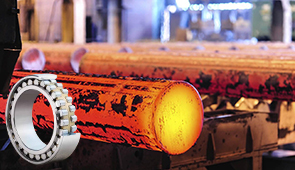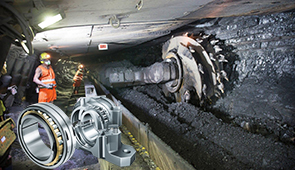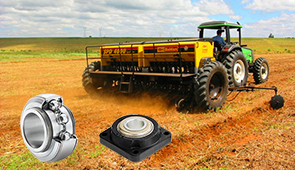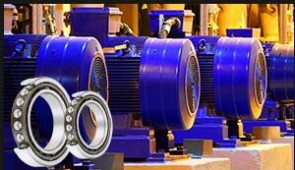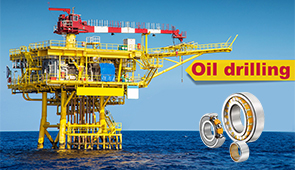Oil or Grease: Understanding the Differences and Applications of Lubricants
When it comes to maintaining machinery, vehicles, and industrial equipment, choosing the right lubricant can mean the difference between smooth operation and costly downtime. Both oil and grease serve as vital components in reducing friction and wear, but they differ significantly in their composition, performance characteristics, and optimal use cases. This article dives deep into the fundamental distinctions between oil and grease, exploring their unique properties, advantages, and specific applications. Whether you’re an engineer, a maintenance professional, or simply curious about lubrication science, this guide is designed to equip you with the insights needed to make informed decisions for prolonging the life and efficiency of your equipment.
Introduction to Lubricants

What are Lubricants?
Lubricants are substances specifically designed to reduce friction, wear, and heat between two surfaces in motion. They create a protective layer that minimizes direct contact between the surfaces, ensuring smoother operation and extending the lifespan of machinery and components. Common types of lubricants include oils, greases, and synthetic compounds, each tailored to serve specific mechanical and environmental requirements.
The primary functions of lubricants are to reduce friction, prevent wear, disperse heat, and protect against corrosion. Additionally, lubricants can help seal gaps between machine components and flush out debris or contaminants during operation. Their effectiveness depends on factors such as viscosity, thermal stability, and compatibility with the materials they interact with. Selecting the right lubricant is critical to maintaining the operational efficiency and reliability of any system or equipment.
Lubricants are used across various industries, including automotive, manufacturing, aerospace, and energy. For example, engine oil lubricates internal combustion engines, reducing heat and friction while preventing metal components from degrading. Similarly, grease is preferred in applications where lubrication must endure extreme pressure or remain effective over prolonged periods without reapplication. Choosing the appropriate lubricant enhances performance, minimizes downtime, and reduces overall maintenance costs.
The Role of Lubricants in Metal Applications
Lubricants serve a very important function in the affairs of metals, transporting wear and friction, temperature control, and corrosion. They are marketed under different formulations with the view to operating under arduous conditions in various industries. Here are five key functions of lubricants in metalworking with detailed descriptions:
- Friction Reduction: One of the primary functions of lubricants is to lower the friction between two metal surfaces, thus allowing smooth operation. Tool oils, for example, reduce wear on cutting tools during operations in metal cutting, thus increasing the service life of the machines.
- Wear Prevention: Moving metals are subject to abrasive and adhesive wear. Lubricants protect surfaces with a film, which prevents the surfaces from coming into direct contact with, and subsequent deterioration of the materials, especially under heavy load conditions.
- Thermal Management: Heat generated in industrial processes such as machining and stamping could be detrimental to metal surfaces as well as to steel tools. In these processes, heat must be dissipated by the working lubricant to keep the operating temperature low enough not to cause any thermally induced stresses.
- Corrosion Protection: When metal parts are exposed to moisture or come into contact with some corrosive element, they tend to rust and degrade. Certain kinds of lubricants containing corrosive inhibitor additives (like zinc or molybdenum disulfide) provide an effective barrier to contamination and oxidation.
- Contaminant Removal: Metal particles and debris accumulate during grinding or honing at times, blocking working surfaces, preventing efficiencies, and causing defects. Fluid lubricants wash away contaminants, thus ensuring cleaner working surfaces and preventing clogging of the equipment.
Given that these are some of the most important functions a lubricant performs, selecting a particular type of lubricant by analyzing the operation, working conditions, and environment is extremely important to achieve the best results and longevity in a metalworking environment.
Importance of Choosing the Right Lubricant
Lubricants have to be correctly selected to support optimal performance, ensuring minimal wear and a longer life span for machinery operating in metalworking environments. Each lubricant presents different properties such as thermal stability, viscosity, and load-carrying capacity, which must completely coordinate with the job and its operating conditions. For example, in high-speed machining, the low-viscosity lubricant is employed to minimize the generation of heat, while heavy-load applications utilize high-viscosity lubricants, which offer better film strength.
More recently, lubricant technology has brought about the introduction of synthetic and semi-synthetic varieties, combining the best performance qualities and environmental advantages into a single package. Commonly, such formulations have better resistance to oxidation and thermal degradation, rendering them suitable for extreme applications. Furthermore, additives such as anti-wear agents, corrosion inhibitors, and emulsifiers are incorporated into these lubricants to further increase their utility, effectively responding to the complex demands of modern machinery.
Up to 10-15% energy savings can be realized, depending on the application, by suitably using a lubricant, which demonstrates operational efficiency. It has been found that almost 50% of machinery failures in all industries can be attributed to lubrication errors. This illustrates the importance of performing a systematic analysis of the working conditions-such as temperature ranges, load pressures, and environmental exposure-before selecting a lubricant. This carefully chosen lubricant will not only assure good operation but will also yield savings by reducing maintenance costs, much downtime, and premature equipment replacement.
Fundamental Differences between Oil and Grease
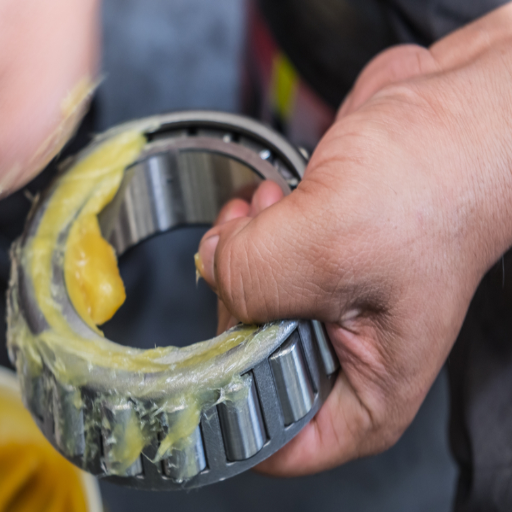
Chemical Composition of Oil and Grease
Oil and grease can be chemically differentiated, thus defining their applications and performance. Oils mainly comprise a base oil of mineral, synthetic, or bio-based origin and are often supplemented by special additives intended for various purposes: e.g., anti-wear properties, oxidation stability, or viscosity characteristics. These additives could be detergents, dispersants, friction modifiers, and corrosion inhibitors, among others, formulated to satisfy specific service conditions.
Greases basically consist of three classes of chemical substances comprising: base oil (similar to the lubricating oils), thickener soap, plus additives for performance. The thickener, which can be either soap or non-soap, modifies the grease from liquid to semi-solid consistency that enabling it to stay in place during application. Typical soaps include lithium, calcium, or aluminum complexes, while non-soap thickeners include polyurea and clay, usually applied for high-performance use. This mixture of grease makes it excellent in lubrication and sealing applications in environments of low speeds or where the re-application of grease is difficult.
The selection of a suitable grease or oil is of semicrucial significance for equipment performance since varying chemical structures provide varying operating temperature ranges and degrees of stability and compatibility with the surrounding environment. Thus, cutting-edge formulations allow the industry to meet rapidly changing engineering and environmental specifications.
Physical Properties: Oil vs Grease
The physical properties of oils and greases are very important in determining their applicability to particular uses. Oil, as a fluid oil is excellent from a flowing standpoint, and it is suited for situations where the frictional surfaces are traveling at high speeds and heat must be removed fast. The viscosity of an oil is one of the most important properties to consider and is very temperature dependent, meaning that it must be chosen with care so that it can adequately form a film and provide protection under operating conditions. Oils can also employ additives that further enhance such properties or impart oxidation resistance, anti-wear ability, detergent capacity, and so on.
It is a semi-solid lubricant consisting of base oil, thickener, and performance additives. It is capable of staying in place even if positioned vertically or in an inverted state, making it very efficient in low-speed and heavily loaded applications, where re-lubrication is not ideal. The grease’s consistency, or penetration grade, dramatically affects its performance in particular applications. Unlike oils, grease thickeners (such as lithium soap, calcium sulfonate, or polyurea) also give the grease some properties like water resistance, thermal stability, and compatibility with some materials.
When considering their differences in physical properties, engineers will be capable of equipping their machinery with the correct lubricant that satisfies the mechanical, thermal, and operational requirements of the equipment, while at the same time minimizing wear and energy losses.
Performance Characteristics and Applications
Grease performance characteristics depend on its base oil, thickener, and various additive packages. Factors that must be considered are load-carrying capacity, performance at high and low temperatures, oxidation stability, water resistance, and shear stability. For example, lithium complex greases have outstanding high-temperature performance features, suiting the substance to demanding operations, such as automotive wheel bearings. On the other hand, calcium sulfonate greases are superbly water-resistant and anti-corrosive; these greases are often used in marine equipment and heavy industrial environments.
Greases find applications in a number of industries, each having its own set of application conditions. In manufacturing plants, highly promoted machinery requires greases that have a reputation for being low in viscosity, thus producing less frictional losses. Conversely, off-road and construction machinery is operated under extreme loads and pressure; it, therefore, requires the treatment of heavy, high-viscosity, or EP grease. In the same way, food-grade grease is formulated with FDA-compliant materials for use in food processing equipment to ensure safety and contamination prevention.
A deeper understanding of the phenomenon enables one to match the grease formulations closely with the application conditions; hence, it prepares engineers for the correct implementation of product formulations to application needs and enhances equipment performance, life, and reliability.
Types of Grease and Their Specific Uses
Common Types of Grease
- Lithium-Based Grease: One of the most popular varieties, lithium grease, is versatile in its applications and possesses good thermal stability, possessing a dropping point in the neighborhood of 190°C to 220°C (374°F to 428°F). It finds its uses in automotive, industrial, and household spheres, among many others, exhibiting good water resistance and providing protection against wear in medium-to-heavy load conditions. This grease is used for wheel bearings, gears, and general-purpose machinery.
- Calcium-Based Grease: Calcium grease is mainly water-resistant and works well in situations needing moisture protection and corrosion prevention. However, it has low thermal capacity, being highly unstable above 80°C (176°F). Often it is used in marine environments, agricultural equipment, and any applications exposed to water.
- Polyurea Grease: Non-soap thickened grease, polyurea grease is mostly utilized in high-temperature applications, having operational stability between 160°C and 180°C (320°F-356°F). Because of its oxidative stability and extended service life, it has been the grease of choice for sealed-for-life bearings, electric motors, and fans.
- Molybdenum Disulfide Grease (Moly Grease): Moly grease contains the solid lubricant molybdenum disulfide (MoS2), which reduces friction and provides protection under high-pressure and extreme load conditions. Heavy-duty machinery such as construction equipment and automotive components-termed universal joints or high-load sliding surfaces-are a befitting place for this grease.
- Silicone Grease: Silicone grease is designed with utmost consideration for compatibility with plastics and rubber and for imparting superb thermal and dielectric stability over an extended temperature range. It is employed in electrical systems, plumbing fixtures, and applications that face exposure to extreme weather.
- Aluminum Complex Grease: As a high-temperature grease with water-resistant properties, aluminum complex grease is rapidly gaining acceptance in food-grade applications and industries with stringent requirements for cleanliness. It also possesses great adhesive qualities, thus suitable for applications where durable lubrication is required.
Choosing grease according to the specific operational demands and environmental conditions of the industry guarantees the best lubrication performance, which invariably reduces wear, minimizes downtime, and increases the operational lifetime of the equipment.
Applications of Grease in Various Industries
- Automotive Industry: Grease finds its usage in automotive applications for the likes of wheel bearings, universal joints, and chassis lubrication. The grease holds up well under load and resists being washed away by water, making it so that critical components can continue to function well, sometimes even through adverse driving conditions. In general, lithium greases are popular because of their excellent thermal stability and resistance to water.
- Manufacturing and Machinery: The industrial processes require lubrication to reduce wear and tear. As such, grease is applied to areas under significant load like gearboxes, bearings, and conveyor systems. It has been observed through research that grease application can raise bearing life expectancy by 60%, which basically boils down to a reduction in maintenance costs.
- Aerospace Industry: The aerospace sector insisted on greases that could work under the extremes of temperature and pressure. Synthetic greases made for aerospace purposes guarantee reliability in the engines, landing gear, and control systems of aircraft. They strike a balance of being low in volatility and highly oxidation resistant to meet very stringent standards.
- Food and Beverage Industry: Food-grade greases lubricate machinery in production lines subject to stringent hygiene and safety regulations. The greases made have non-toxic NSF H1 labeling that guarantees the grease will never contaminate a food product. The greases are made to resist water, mild levels of temperature, and continuous washdowns.
- Energy Sector: Special greases are used in the energy industry to treat extreme conditions encountered in working with wind turbines and petroleum extraction sites. An instance in point is wind turbine bearings, which, subjected to high torque at low speed, demand greases that are endowed with superior anti-wear properties and long intervals between re-lubrication for maximum performance and limited operational interruptions.
Considering the varying operational environments and requirements of the mentioned industries, the formulation of greases is crucial in increasing the life of machinery, cutting down operational interruptions, and the overall efficiency of industrial operations.
Best Practices for Using Grease
The grease used should be chosen according to the exact equipment and operating conditions. Hence, load, speed, temperature, and environmental exposure must be factored into the grease formulation. A grease unsuitable for such an application would see increased wear, overheating, or even a catastrophic failure.
The application technique is just as important as the right grease. Grease amounts applied that are too much or too little only serve to create operational inefficiencies. Over-greasing can, for instance, damage the seal or cause overheating of the bearing. Inadequate grease can hardly protect against friction and wear from constant use. Grease guns build precision into the operation, with many incorporating graduated measurement settings. Therefore, in the maintenance schedule, grease points shall be inspected and topped off as needed.
The way grease is handled and stored is yet another protective barrier to maintain the grease quality for application. Grease should be kept in a clean and dry environment to maintain the grease’s current contamination from dirt, moisture, or any other sort of debris. Dissolved contaminants would directly affect the grease’s quality, which compromises its lubricant action and the barrier it provides against moisture to the elements. Another way of ensuring a clean application is to keep grease in sealed containers and to use clean tools for application. By following these methods, one can enhance the performance and reliability of industrial equipment, thus decreasing operating costs and downtime.
Oil: Properties and Applications
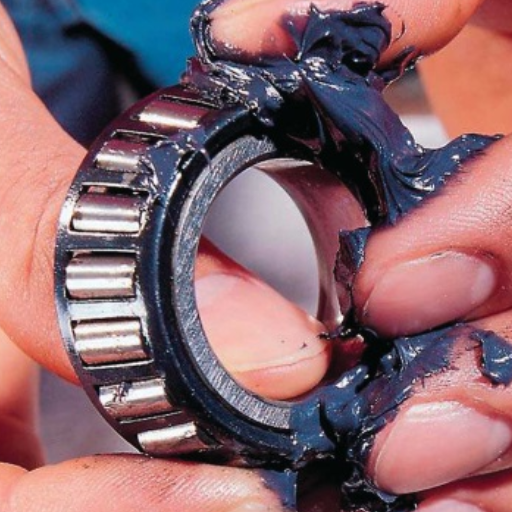
Common Types of Oil Used as Lubricants
Lubricating oils provide frictional resistance and wear between mechanisms and components; their properties can vary enormously depending on their base and on the application for which they are used. Some of the more prevalent ones include mineral oils, synthetic oils, and biodegradable oils, each type having characteristics suitable for particular environments of operation.
- Mineral Oils: Mineral oil is made by refining crude oil and constitutes the most common type of industrial lubricant due to its cheap availability. It provides moderate thermal stability and lubrication capacity; hence, it can be used for general machinery and automotive engines. However, at extremes of temperature or heavy and harsh working conditions, it loses its efficacy faster than the advanced ones.
- Synthetic Oils: Designed synthetically for lubrication purposes, synthetic oils provide enhanced performance under tough operating conditions. The oils have excellent and high resistance to oxidation, thermal degradation, and viscosity loss within a wider range of temperatures. Use of synthetic oils is preferred in high-end engines, heavy-duty industrial equipment, and aerospace applications. Also, often synthetic oils are a mixture of some base fluids and additives that bestow great anti-corrosion, anti-wear, load-carrying, and cleaning properties.
- Biodegradable Oils: These oils came to be produced as a green alternative for environmental conservation. Made on a vegetable base or synthetic esters, they give great lubrication and are designed for breakdown in nature, thus saving on environment. They are very useful in industries such as forestry, agriculture, and marine operations, where the spill of oil would cause serious ecological problems.
Each kind of lubricant oil strikes a different balance of properties, which should be very carefully matched to the specific and operational requirements of the equipment types in question. Knowing these options refines the machinery’s performance, extends the life of the equipment, and helps in running it within the specified environmental regulations.
Applications of Oil in Automotive and Machinery
Lubricating oils are critical for the functioning of automotive and industrial machinery, thereby ensuring optimal operation, reducing wear, and minimizing equipment failure. Below are five main applications of oils in these sectors, with their descriptions:
- Engine Lubrication: Engine oils lower friction among moving parts, create a heat source, and protect against corrosive agents. Since 1995, new internal combustion engine designs have needed lubricants with precise viscosity and thermal stability to provide good fuel economy and durability. Synthetic engine oils, for instance, have been shown to perform more satisfactorily under extreme conditions, with some instances suggesting a 50% reduction in wear to engine components when compared with conventional oils.
- Hydraulic Systems: Hydraulic oils find use in systems that require the transfer of energy through a fluid. They provide power transmission, lubrication, and cooling in machinery like excavators, forklifts, and CNC machines. Certain hydraulic oils reduce foaming and reduce wear to maximize efficiency and protect system components. Recent advances in their application can reduce energy losses by 30%.
- Gearbox and Transmission: Gear oils are intended to lubricate and protect gearbox components and keep them running smoothly under heavy load conditions. They typically contain extreme-pressure additives and are employed in mechanisms experiencing high stress and shear, such as automotive transmissions and industrial gear systems. According to research, good-quality gear oil can prolong the working life of gearbox components up to twice.
- Coolants and Heat Removal: These oils, comparatively rarely, are used while cooling is required in the presence of systems that do not tolerate a water-based solution, such as industrial cutting or even high-temperature-based systems. Heat transfer oils are thermally stable so that precise temperature control can be achieved in systematically demanding situations, including chemical processing and other power plant operations.
- Prevention of Corrosion and Surface Protection: Specialty oils are sprayed on metal machine surfaces to protect against corrosion due to exposure to moisture, chemicals, or adverse environmental conditions. These oils provide a surface barrier and thereby greatly extend the useful life of components in both storage and operational states in industries like marine equipment and aerospace.
Each of these applications points to the central role played by lubricating oil in enhancing technological performance, ensuring the reliability of the systems, and ultimately lowering the operational costs across a wide spectrum of industries.
Best Practices for Using Oil
Execution of the validity of lubricating oils is mostly defined by the tolerances mentioned and the following attributes. First, regular monitoring and oil-condition analysis must be performed for possible contaminants and chemical degradation. Spectroscopic analyses, viscosity measurement, and particle counting all show up as possible means of establishing oil health and determining when its replacement will be necessary.
Second, the oil must be checked for compatibility with system material, equipment design, and operating conditions. Viscosity grade, thermal stability, and additive formulation must be verified for its application. Synthetic oils should be selected, for instance, in high-temperature applications and wherever oxidation resistance is needed to prevent thermal degradation.
Most important, cleanliness must be maintained during storage and handling. Contamination of particulates, moisture ingress, or being improperly sealed can harm oil performance. Use appropriate storage containers, sealed systems, and filtration methods to maintain contaminant-free oil.
Furthermore, operating temperature values must be maintained within limits set out by the manufacturer, pressure ranges, and intervals between oil changes. Failure to follow these guidelines with extended use of oil or excessive application of heat can lead to premature failure of equipment, thereby increasing maintenance costs. The industries must amalgamate these practices with regular system audits to scale up their performance all along with engendering dependable operations.
Maintenance Tips for Optimal Lubricant Performance
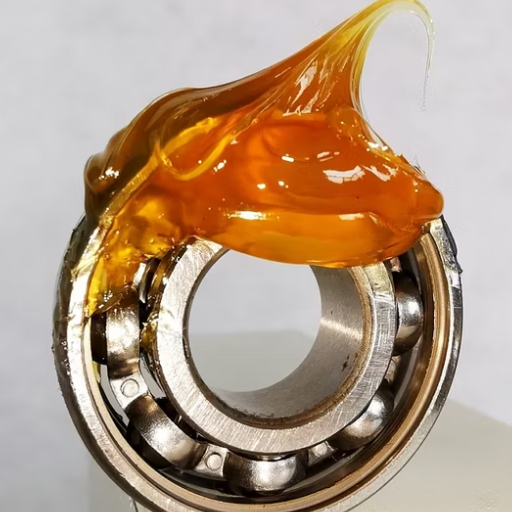
Regular Maintenance Practices for Oil and Grease
These days, engineers follow systematic maintenance strategies that help guarantee the oil and grease render long-term industrial applications. Maintenance monitoring of the lubricant condition needs to be carried out thrice, in which oil sampling and analysis are amongst those periodic measures by which any content is checked for contamination, oxidation, or deterioration of chemical properties. Storing lubricant materials properly so that moisture and unfavorable temperatures do not affect them is another factor that plays into the preservation of lubricant properties before application.
Equipment such as seals and grease fittings in good condition ensures that the lubricant is not prematurely lost or contaminated. After lubrication, adherence to the working of the manufacturer’s specifications for re-lubrication intervals, application quantities, and better re-lubrication intervals prevents excess friction and heat generation due to over-lubrication. Further, with advanced lubrication monitoring technologies, including sensors to measure temperature, viscosity, and particle levels, on a real-time basis, maintenance can be carried out proactively to ensure system reliability.
For special equipment operating at high temperatures or under extreme loads, the selection of lubricants with an appropriate viscosity and additive package ensures the stability and performance of the system. When combined with good maintenance strategies, these measures will drastically cut downtime and increase the useful life of critical machinery, thereby ensuring optimized operational efficiency.
Signs of Lubricant Degradation
The identification of lubricant degradation is crucial for machinery performance and longevity. Increases or decreases in viscosity, contamination, oxidation, thermal breakdown, and the presence of by-products such as sludge or varnish are a few of the degradation points. Viscosity changes (upward or downward) generally indicate some form of contamination or thermal degradation, and if such a change takes place, the lubricant may no longer be able to reduce friction and wear effectively.
Oxidation, another degradation mechanism, is caused due to prolonged exposure to high temperature and oxygen, thus creating acids and thickening the oil. The process is enhanced when contaminants such as water or metal particles are present, acting as catalysts. Thermal breakdown occurs when lubricants are subjected to temperatures beyond their working limits. This particular state weakens the molecular structure of the oil and, in consequence, loses its lubrication properties.
A lubricant that has become dark in color, contains particulate matter, and has an unusual smell is usually an indicator of possible contamination or chemical degradation. These changes are often evaluated by more advanced methods, usually Fourier Transform Infrared (FTIR) spectroscopy, or Total Acid Number (TAN) analysis, which infer corrective actions based on data. The less one knows and detects, the more hazardous it becomes in machinery damage and downtime.
Best Practices to Extend Equipment Life
A proactive, data-backed maintenance approach is necessary to extend equipment life and maintain an equipment’s optimum working condition. Predictive maintenance should be scheduled regularly through condition-monitoring tools, such as vibration analysis, ultrasonic testing, and oil analysis check for early onset of wear or failure. Corrective measures are then initiated just in time, thereby reducing maintenance costs and unplanned downtime.
Lubrication management is an essential factor to consider; choose the proper lubricant depending on the equipment specifications, operations, and viscosity considerations. Contamination should be prevented by way of sealed systems and adequate filtration to prevent particulate ingress, which aggravates the wear. Followthe manufacturer’s instructions for routine cleaning, calibration, and replacement of parts.
There could be monitoring conditions such as temperature, pressure, or load variations that could indicate a deviation from standard operating conditions. Known deviations also expose abnormalities. Advanced equipment monitoring is possible with IIoT integration, providing real-time analytics on critical parameters and enabling remote diagnostics.
Finally, invest in employee training to ensure proper operation and maintenance protocols are followed. A culture that prioritizes regular assessments and quality control will significantly extend equipment life, reduce costs, and enhance productivity across industrial processes.
Frequently Asked Questions (FAQ)
Q: What is the difference between grease and oil?
A: The main difference between grease and oil lies in their consistency and application. Grease is a semi-solid lubricant that contains a thickener, which allows it to stay in place and provide lubrication for longer periods, especially in high-pressure environments. Oil, on the other hand, is a liquid lubricant that flows freely and is often used for applications where circulation is necessary, such as in engines.
Q: When should I use oil instead of grease?
A: Oil is used primarily in scenarios where high-speed motion and the need for circulation are required. For example, in engines and machinery that operate at high temperatures, oil can efficiently flow to lubricate moving parts. Grease is better for applications where a solid lubricant is needed to prevent leakage and retain lubrication over time.
Q: Can I use grease on my vehicle’s brake system?
A: While some types of grease may be suitable for certain components of a vehicle’s brake system, it’s crucial to use high-quality brake grease specifically designed for that application. Using the wrong type of grease can lead to problematic performance and may not provide the necessary protection against harmful contaminants.
Q: What are grease additives, and why are they important?
A: Grease additives are chemical compounds added to lubricants to enhance their properties. These may include anti-wear agents, viscosity modifiers, and antioxidants. They improve the performance of grease, helping it to reduce friction, resist high temperatures, and protect against contaminants, thereby extending service life.
Q: How does bearing grease differ from standard grease?
A: Bearing grease typically has a specific formulation designed to provide superior protection for bearings under heavy loads and high-speed conditions. It often contains additives that improve its stability and resistance to breakdown, ensuring it can withstand higher temperatures without leaking or losing its lubricating properties.
Q: What types of grease are available for industrial applications?
A: Various types of grease are designed for industrial applications, including lithium-based, calcium-based, and synthetic greases. Each type has distinct properties that make it suitable for specific environments, such as high-speed machinery, high temperatures, or heavy load situations.
Q: How can I prevent oil or grease leaks in my machinery?
A: To prevent oil or grease leaks, regular maintenance is crucial. Ensure that seals are intact and that you use the appropriate lubricant for your machinery. Additionally, check for wear and tear in components and replace any that may be compromised, as these can lead to leaks and contamination.
Q: What is the advantage of using synthetic grease over conventional grease?
A: Synthetic grease offers several advantages over conventional grease, including better performance in extreme temperatures, improved stability, and a lower likelihood of breaking down under pressure. This makes it an excellent choice for high-performance machinery and applications that require reliable lubrication.
Q: How does the viscosity of oil affect its performance?
A: The viscosity of oil plays a critical role in its performance as a lubricant. Oils with higher viscosity provide better film strength and protection against wear, especially in high-load applications. Conversely, lower viscosity oils circulate more easily, making them ideal for high-speed components. Selecting the right viscosity ensures optimal lubrication and reduces the risk of friction and wear.
Q: Can contaminants affect the performance of grease and oil?
A: Yes, harmful contaminants can significantly impact the performance of both grease and oil. Dirt, moisture, and other particles can degrade the lubricant, reducing its effectiveness and leading to increased friction and wear in machinery. Regular maintenance and proper sealing can help mitigate these risks and maintain the integrity of the lubricant.
UCTH213-40J-300 with Setscrew(inch)
CNSORDERNO: Normal-duty(2)
TOGN: UCTH213-40J-300
SDI: B-R1/8
SD: 2 1/2
UCTH212-39J-300 with Setscrew(inch)
CNSORDERNO: Normal-duty(2)
TOGN: UCTH212-39J-300
SDI: B-R1/8
SD: 2 7/16
UCTH212-38J-300 with Setscrew(inch)
CNSORDERNO: Normal-duty(2)
TOGN: UCTH212-38J-300
SDI: B-R1/8
SD: 2 3/8
UCTH212-36J-300 with Setscrew(inch)
CNSORDERNO: Normal-duty(2)
TOGN: UCTH212-36J-300
SDI: B-R1/8
SD: 2 1/4
UCTH211-35J-300 with Setscrew(inch)
CNSORDERNO: Normal-duty(2)
TOGN: UCTH211-35J-300
SDI: B-R1/8
SD: 2 3/16
UCTH211-34J-300 with Setscrew(inch)
CNSORDERNO: Normal-duty(2)
TOGN: UCTH211-34J-300
SDI: B-R1/8
SD: 2 1/8












